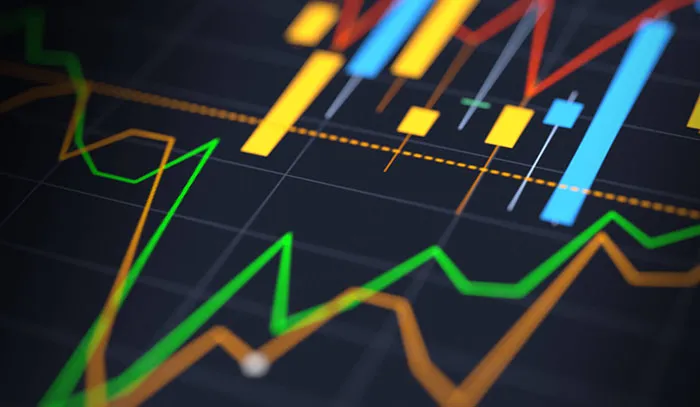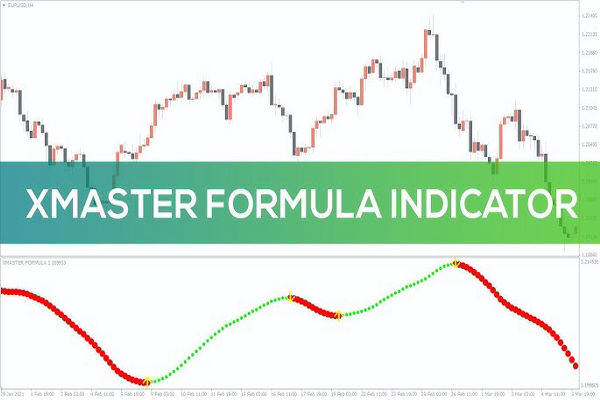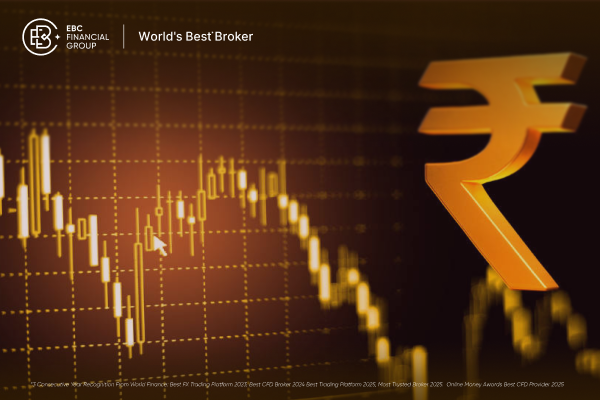The Xmaster Formula Indicator and XHMaster Formula Indicator are popular MetaTrader 4 / MetaTrader 5 tools that combine multiple filters like EMA, MACD, and RSI to help traders spot higher-probability entries. XHMaster offers smoother, more adaptive signals compared to the classic Xmaster Indicator, making it better for longer timeframes, while Xmaster remains effective for fast scalping setups.
Key Takeaways:
Xmaster Formula Indicator = faster signals, best for scalping
XHMaster Formula Indicator = smoother signals, better for swing/day trading.
Both indicators combine trend + momentum filters to reduce noise and false signals.
They do not “magically” predict price; combining with filters (EMA, RSI (Relative Strength Index), ATR) is critical.
Always test in demo before going live, as performance varies by pair and timeframe.
Why Xmaster and XHMaster Matters in 2025
One of the biggest challenges in forex trading is knowing which signals to trust and which to ignore. The Xmaster Formula Indicator and the XHMaster Formula Indicator were designed to solve this by combining multiple filters like trend, momentum, and volatility into simple buy and sell arrows. In 2025, when markets move faster and false signals are more common, choosing the right indicator can make the difference between consistent profits and repeated losses.

Xmaster vs XHMaster:
While both the Xmaster Formula Indicator and the XHMaster Formula Indicator aim to simplify trading decisions with easy buy/sell arrows, they are not the same tool. Xmaster is known for being fast and reactive, making it popular among scalpers who want quick entries. XHMaster, on the other hand, was developed as a more refined version, adding smoothing and volatility filters to cut down on false signals. In short, Xmaster is about speed, while XHMaster is about accuracy, and the right choice depends on whether you trade short bursts or prefer longer, steadier moves.
Structural Differences:
Xmaster: Built for speed, with lighter filters. Signals appear quickly, but this also means more false positives.
XHMaster: Built for accuracy, with heavier smoothing. Signals arrive later, but with fewer false alarms.
Use-Case Differences:
Xmaster Formula Indicator → Best for Scalping and Intraday:
Works well on M5-M30 charts where traders need fast entries and quick exits.
Limitation: Can struggle in sideways markets and may need extra filters (like EMA or ATR).
XHMaster Formula Indicator → Best for Day and Swing Trading:
Performs better on H1-Daily charts, where traders hold positions for hours or days.
Limitation: Signals can lag, which sometimes means entering late into strong moves.
In short: Choose Xmaster if you want speed. Choose XHMaster if you want accuracy. Many traders even combine them, using Xmaster for early signals and XHMaster as confirmation.
| Feature |
Xmaster Formula Indicator |
XHMaster Formula Indicator |
| Purpose |
Designed to give fast buy/sell arrows for short-term trades. |
Built as an improved version with smoother, more adaptive signals for higher timeframes. |
| How It Filters |
Combines moving averages, MACD, and RSI to quickly react to price momentum. |
Uses a similar formula but applies extra smoothing and volatility checks to reduce noise. |
| Signals |
Arrows (green = buy, red = sell). Responds quickly but can create more false signals in ranging markets. |
Arrows with fewer flips. Signals arrive later but are generally more reliable in trending markets. |
| Best Timeframes |
M5 to M30 (scalping and intraday trades). |
H1 to Daily (day trading and swing trading). |
| Pros |
- Very responsive - Good for fast scalping setups - Easy to read on charts |
- Smoother, cleaner signals - Better for trend-following - Fewer false alerts in choppy markets |
| Cons |
- Can give too many signals in sideways/ranging markets - Needs filters like EMA or ATR |
- Signals can be slower (lag) - Not ideal for quick scalping - Requires patience for setups |
History of Xmaster & XHMaster Formula Indicators (2020–2025)
2020 - Early Adoption:
The Xmaster Formula Indicator started gaining real attention in 2020 when it spread through popular Forex forums and groups. Traders, especially beginners, were drawn to its plug-and-play simplicity. It required almost no setup, just drop it on a MetaTrader chart, and buy/sell arrows appeared instantly. Many retail traders used it on major forex pairs like EUR/USD and GBP/USD, hoping to catch quick intraday moves without learning complex strategies.
2021 - The Rise of XHMaster:
By 2021, developers and community coders began modifying the original script. That’s when the XHMaster Formula Indicator appeared. It was marketed as a more refined, less noisy version of Xmaster. The smoother signals appealed to traders frustrated with false entries on lower timeframes. This sparked the first wave of debate: was the “H” version actually more accurate, or just slower?
2022 - Volatility Testing Ground:
In 2022, central bank tightening and geopolitical shocks created wildly volatile conditions in Forex markets. Traders wanted fast, visual confirmation tools to help manage these rapid swings. Both Xmaster and XHMaster gained traction again as traders shared screenshots of signals catching big moves. Online discussions began to focus more on accuracy vs speed, with scalpers favoring Xmaster’s quick arrows and swing traders leaning toward XHMaster’s filtered approach.
2023 - Integration into Broader Strategies:
By 2023, it became clear that relying on these indicators alone wasn’t enough. More content creators, bloggers, and YouTubers published tutorials showing how to combine Xmaster signals with other methods like Fibonacci retracements, support/resistance zones, or order flow concepts. The conversation shifted from “Is this indicator good?” to “How can I make it part of a bigger system?”
2024 - Growing Scepticism:
As trading education matured, many professionals and advanced retail traders voiced scepticism. The indicators were still popular, but they were increasingly described as entry-level tools rather than professional-grade systems. Traders emphasized the need for risk management, backtesting, and confluence with fundamentals before trusting any arrow-based signals.
2025 - Current Status:
Today, in 2025, the Xmaster Formula Indicator and XHMaster Formula Indicator are still widely used, especially in retail-focused regions and emerging markets where MT4 dominates. They remain popular for their simplicity and accessibility, but most serious traders treat them as supporting indicators, not complete strategies. The debate between the two continues, with one side valuing speed and the other preferring stability, but both are now seen as tools best used alongside broader technical and fundamental analysis.
What Is the Xmaster Formula Indicator?
The Xmaster Formula Indicator is a custom forex tool designed mainly for MT4 and MT5 platforms. Its purpose is to simplify complex technical analysis by giving traders direct buy/sell arrows instead of multiple confusing indicators. This makes it especially popular among beginner and intermediate traders who want clear visual guidance.
Key Technical Components Xmaster:
Although the exact formula is not always disclosed by developers, most versions of Xmaster combine:
Moving Averages (MA): To detect the overall trend direction.
MACD (Moving Average Convergence Divergence): To measure momentum shifts.
RSI (Relative Strength Index): To filter overbought/oversold zones.
Volatility Envelope: To track when price is stretching too far from its average.
Together, these filters aim to produce arrows that appear when multiple conditions align. For example, if trend and momentum point upward and RSI shows enough strength, a green (buy) arrow will be shown.
What Traders See on the Chart in Xmaster:
On your MT4/MT5 chart, the Xmaster indicator typically displays:
Green arrows below candles = Buy signal.
Red arrows above candles = Sell signal.
A smoother histogram or colored line that shifts with momentum.
This responsiveness makes it good for short-term trades, but the speed can also create false signals in sideways markets.
What Is the XHMaster Formula Indicator?
The XHMaster Formula Indicator was created as a modified or “next generation” version of the original Xmaster. Traders wanted fewer false alerts and smoother signals, so XHMaster added more filters and smoothing techniques to reduce noise.
Unique Advantages and Upgrades:
Compared to Xmaster, the XHMaster tends to:
Filter out market noise more effectively in ranging conditions.
Generate fewer but more reliable arrows, especially on higher timeframes.
Lag slightly more, because of the smoothing, but often improves accuracy in trending conditions.
What Traders See on the Chart in XHMaster?
On MT4/MT5, XHMaster also shows green and red arrows, but they appear less frequently. Instead of flipping signals often, it waits until stronger confirmations are in place. This makes it more useful for day traders and swing traders who prefer quality over quantity.
How these Indicators Work?
The Xmaster and XHMaster Formula Indicators are not magic buttons, they work by combining several well-known technical tools into a single overlay. Understanding how these components interact will help you use them more effectively, reduce false signals, and improve your trading decisions.
What Are the Core Technical Components?
EMA (Exponential Moving Average)
EMAs track the average price over a set number of bars, giving more weight to recent price action.
Traders use EMAs to identify the trend direction. For example, price above a 200 EMA usually indicates an uptrend.
In Xmaster/XHMaster, EMAs help decide when to trigger buy or sell arrows based on trend alignment.
MACD (Moving Average Convergence Divergence):
MACD measures momentum by comparing two EMAs and plotting the difference as a histogram.
Positive histogram bars indicate bullish momentum; negative bars indicate bearish momentum.
The indicator uses MACD to confirm trend strength and avoid entering weak moves.
RSI (Relative Strength Index):
RSI shows overbought (>70) or oversold (<30) conditions and helps filter entries.
For example, Xmaster may avoid triggering a buy arrow if RSI is already above 70, even if EMA and MACD suggest an uptrend.
Stochastic Oscillator:
Parabolic SAR (Stop and Reverse)
Optional: Bollinger Bands
Why These Components Work Together?
The power of Xmaster and XHMaster comes from combining multiple indicators, each with a different purpose:
Trend (EMA) ensures you only trade with the market direction.
Momentum (MACD & Stochastic) confirms that the trend is strong enough to act on.
Overbought/Oversold Filter (RSI) prevents entries near extremes where reversals are likely.
Reversal/Safety (Parabolic SAR & Bollinger Bands) helps reduce risk and refine stop-loss placement.
When it fails:
Sideways/Ranging Markets: Trend is weak or non-existent; EMA crosses, MACD, and momentum indicators may flip back and forth, creating false signals.
Sudden Volatility Spikes: News events can override indicator predictions, causing arrows to appear after a sharp move.
Always combine these indicators with contextual filters like multi-timeframe trend analysis, ATR-based stop adjustments, or volatility filters to improve accuracy.

Installation & Setup of Xmaster Formula Indicator and XHMaster Formula Indicator
Installation on MT4
Open your MT4 platform.
Click File → Open Data Folder.
Navigate to MQL4 → Indicators.
Copy the Xmaster/XHMaster .ex4 or .mq4 file into this folder.
Close and restart MT4.
Open Navigator (Ctrl+N) → Indicators → Drag Xmaster/XHMaster onto a chart.
Adjust inputs and parameters as needed.
After installation, always check the Experts/Journal tab for errors. If there’s an error, the file may be in the wrong folder or incompatible with your MT4 build.
Installation on MT5
Open your MT5 platform.
Click File → Open Data Folder.
Go to MQL5 → Indicators.
Copy the .ex5 or .mq5 file into this folder.
Restart MT5.
In Navigator, locate the indicator, drag it to your desired chart.
Customize settings according to your strategy.
MT4 and MT5 have different file structures. MT4 files do not work on MT5 and vice versa.
Settings & Parameters Explained
Once the indicator is loaded, you can adjust key parameters:
| Parameter |
Purpose |
Recommendation |
| Sensitivity / Signal Strength |
Adjusts how many arrows appear. Higher = fewer signals |
Start at default, tweak based on timeframe |
| Arrow Size & Color |
Makes buy/sell arrows visible |
Choose contrasting colors (green/red) for clarity |
| Smoothing / Periods |
Reduces false signals by averaging data |
Use moderate smoothing for day trading; low smoothing for scalping |
| Alert Options |
Enables popups, emails, or notifications |
Turn on for live alerts if needed |
| Other Filters |
Some versions allow EMA, RSI, or ATR thresholds |
Adjust based on your strategy and pair volatility |
FAQs About Xmaster and XHMaster Formula Indicators
1. What platforms support these indicators?
Both are primarily designed for MetaTrader 4 (MT4), though some modified versions exist for MT5.
2. What are the differences between Xmaster and XHMaster?
XHMaster is a modern variant with customizable sensitivity and clearer visuals; core logic remains similar to Xmaster.
3. Which is better: Xmaster or XHMaster?
Neither is universally superior. Xmaster offers faster signals but more noise, while XHMaster provides cleaner but sometimes slower entries.
4. Which timeframe is best for Xmaster?
Xmaster works best on M5 to M30 charts, perfect for scalping and fast intraday trades.
5. How do I set up alerts for Xmaster/XHMaster?
In indicator settings, enable popup, email, or push notifications. Alerts trigger whenever a new buy or sell arrow appears.
6. Does XHMaster repaint signals?
No. Both Xmaster and XHMaster are designed with no-repaint logic, so once an arrow appears, it stays fixed on the chart for reliable backtesting.
7. Are they free or paid tools?
Both circulate widely online as free downloads, though some customised versions are sold by vendors.
8. Can the indicators be used in all markets?
Yes, but they are most commonly applied to forex pairs. Some traders adapt them for indices and commodities.
9. Can I use it for cryptocurrencies or indices?
Yes, most MT4/MT5 custom indicators apply to any chart. But test thoroughly, crypto volatility is different from Forex.
10. How accurate are these indicators?
Accuracy depends on market conditions, timeframe, and filters used. XHMaster is generally more reliable in trending markets, while Xmaster can produce more false signals in sideways conditions.
11. How do I handle false signals?
Add filters like RSI or time-of-day, avoid trading in ranges, or wait for multi-timeframe alignment.
12. Should I use Xmaster or XHMaster?
If you prefer quick, frequent signals then use Xmaster. If you want fewer, steadier setups then use XHMaster.
13. Are these indicators suitable for beginners?
Yes. Both indicators are beginner-friendly, showing clear buy/sell arrows, but beginners should practice on a demo account first.
14. Do professionals use these indicators?
They are mainly popular among retail traders. Professionals tend to rely on broader quantitative or price action models.
15. Can I combine Xmaster with other tools?
Yes, and you should. Common pairings:
Supertrend for trend filter.
RSI or MACD for momentum.
EMA crossovers for confirmation.
16. Any risk disclaimer?
Past performance is not indicative of future results; always use proper risk management and demo test any strategy.
Conclusion
Xmaster and XHMaster are powerful tools for forex traders, but they serve different purposes. Use Xmaster for fast signals and scalping on short timeframes (M5–M30). Use XHMaster for smoother, more reliable signals on higher timeframes (H1–Daily) for day trading and swing trading.
Both indicators combine trend, momentum, and volatility filters to generate clear no-repaint buy and sell arrows. You can see exactly what the signals mean on your chart: green arrows for buy, red arrows for sell, with supporting histograms or lines showing trend strength.
Installing them on MT4 or MT5 is simple. Place the correct file type in the Indicators folder, restart your platform, and adjust key settings like sensitivity, arrow size, and smoothing. Test all settings on a demo account before trading live.
You now also know practical strategies for scalping, day trading, and swing trading, along with filter recipes to reduce false signals. Combine these strategies with proper risk management, ATR-based stops, and position sizing to trade confidently.
Key Points:
Xmaster = speed, XHMaster = accuracy.
Always confirm signals with trend and momentum filters.
Demo test every setup before using real money.
Adjust settings to match your trading style.
Trading forex involves significant risk, and past performance does not guarantee future results. The Xmaster and XHMaster indicators are tools to assist in trading decisions, but they do not guarantee profits. Always use proper risk management and test any strategy on a demo account before trading with real money.























